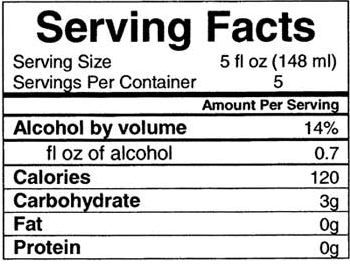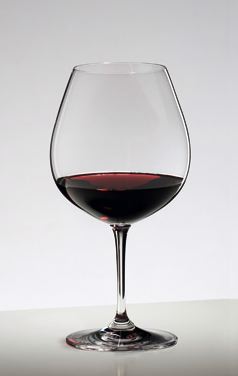Wine as Part of a Healthy Lifestyle: Introduction
“The data shows again and again that abstinence, compared to moderate consumption,
is a major risk factor for heart disease, obesity, metabolic syndrome and other diseases.”
Andrew Waterhouse, Professor of Viticulture & Enology, University of California at Davis
As I retired medical doctor, I still have a serious interest in the research on the relationship between alcoholic
drinks and a healthy lifestyle. Humans have been consuming wine for over 10,000 years and the link between
wine and health has been recognized for over 5,000 years. It is clear from the writings of the ancients that they
knew that there was a boundary between the health benefits of wine and hazardous imbibing. The term,
hormesis, applies here, meaning a biological phenomenon in which the favorable effect of moderate dosage of
a substance is toxic in higher doses.
Readers will find this review helpful in keeping them informed about important scientific publications and policy
statements. However, it cannot be emphasized enough that they should follow the lifestyle, diet and drinking
advice of their doctors.
A number of issues related to alcoholic drinks and health were prominent in the news and scientific press in
2013. The escalation of drinking in women received the most publicity along with continued controversial
studies and recommendations regarding drinking during pregnancy and the relationship of drinking to breast
cancer. The ongoing debate over the relative advantages of drinking wine versus beer received notice as did
the tendency of the public to incorrectly understand the idea of a standard drink, frequently believing a
standard drink is of greater volume than it is. There were a number of new alcohol related laws and taxes
proposed both in the United States and abroad, and wine labeling issues continued to occupy the public’s
interest. Some alarming studies on binge drinking in young people and the resulting adverse health
consequences, should bring all parents and advisers to attention. Studies of polyphenols, particularly
resrveratrol, continue to show health benefits, perhaps a role in increased longevity, and some value in
preventing and or treating cancer, although the results continue to require a cautious interpretation. Finally,
there were some major research studies reported on the relationship of moderate alcohol consumption and
health and lifestyle.
No new policy recommendations were issued by the United States government in 2013. The most recent
revised National Institutes of Health 2010 Dietary Guidelines for Americans (www.health.gov/dietaryguidelines/)
include information on the benefits of moderate drinking, but they do not advise abstainers to begin drinking for
health reasons. The Dietary Guidelines are being reviewed in 2014 and the 8th edition of The Dietary
Guidelines will be published in the fall of 2015.
In the following pages, I will summarize peer-reviewed, scientific studies published in 2013 that contribute to
our understanding of the roles that alcohol, and in particular wine, play in our health. Papers presented at
conferences are also included. This year I have chosen to be more concise since I realize most readers of this
publication are not interested in an extensive discussion and critique of each scientific article. For those
wishing to seek out the articles in their entirety, visit PubMed which comprises more than 21 million citations for
the biomedical literature from MEDLINE, life science journals and online books: www.pubmed.gov.
In the capsular summaries of research, I have referred to “The Forum” a number of times for consensus
opinion on the validity of some study’s conclusions. The Forum is the International Scientific Forum on Alcohol
Research, a joint undertaking of the Institute on Lifestyle & Health of Boston University School of Medicine and
Alcohol in Moderation (AIM) of the United Kingdom. The Forum includes a voluntary group of epidemiologists,
statisticians, basic scientists, physicians, psychologists and specialists in social matters, psychology and public
health.
For further general and detailed information about alcoholic drinks and health, consult the following websites:
As a prelude to considering any study on the relationship between alcoholic drinks and health, it is important to
understand the definition of “moderate drinking” since it is frequently referenced in research articles and is the
level of drinking associated with health benefits in men and women. A few key definitions must be clearly
understood. In the United States, a standard drink or unit contains 17.7 ml of ethanol (about 14 grams of pure
alcohol) which is equivalent to 12 ounces of beer (about 5% alcohol), 5 ounces of table wine (about 12%
alcohol) and a shot or 1.5 ounces of 80 proof distilled spirits (about 40% alcohol). A full bottle of wine (750 ml)
contains about 5 to 7 standard drinks depending on the wine’s alcohol percentage. To determine the number
of standard drinks in a bottle of wine, multiple 750 ml by the alcohol percentage and divide by 17.7.
The 2010 Dietary Guidelines for Americans (DGA) state that if alcohol is consumed, it should be consumed in
moderation which is defined as no more than 1 standard drink per day for women and no more than 2 standard
drinks per day for men. This definition refers to the amount consumed on any single day and is not intended to
be an average over several days. The National Institute of Alcohol Abuse and Alcoholism states that men
should not exceed 4 drinks per day or a total of 14 per week and women should not exceed 3 drinks a day or a
total of 7 per week. The American Heart Association recommends that men not exceed 2 units a day and
women should not exceed 1 unit a day.
When drinking wine, one must take into account the alcohol percentage, scaling back the volume of drinking
when imbibing a wine with a higher alcohol by volume or reaching for a lower alcohol wine to insure that you
stay within the confines of drinking moderately. Remember also, that wines that are under 14.0% can be
mislabeled by up to 1.5%, and wines that exceed 14.0% in alcohol can vary by 1% (a wine that says 14.1% on
the label can actually contain 15.1% alcohol by volume).
Drinkers commonly underestimate the amount of alcohol they imbibe, thinking a standard drink is of greater
volume that it is. This is termed the “over-sizing effect” and leads to a false sense of drinking within the
confines of moderation. Over-imbibing can be unintentional because of the various shapes of wine glasses,
with wide glasses typically receiving inordinately larger pours. A study of wine-drinking subjects published in
2013 in Substance Use & Misuse from Iowa State University found (1) the average pour into a wide glass was
11.9 percent higher than into a standard glass; (2) 12.2 percent more wine was poured when a glass was held
versus a glass placed on a table; (3) white wine pours were 9.2 percent more generous than red.
A Riedel Vinum Burgundy glass that is half-filled, holds a surprising 12 ounces. The photo below shows a
Vinuum XL glass containing about 6 ounces, or close to one standard drink.
Measuring wine glasses are available for health conscious wine drinkers who want to be able to measure their
wine consumption. Discreet bubbles on the glass mark 4, 6, and 8 ounce portions on lead-free crystal from a
Riedel factory in Germany. Both red and white wine moderation glasses are available. The glasses are
endorsed by California cardiologist Steven R. Gundy, M.D.. To buy, visit www.mr-picky.com/moderation-wineglasses/.
There are other versions of measuring wine glasses including the “Caloric Cuvee,” which has marks
to note calorie intake of various pours, but I am put off by the top mark on the glass which says, “Who cares?”
A Health Survey for England conducted by the University College London and published in the European
Journal of Public Health found that as many as three quarters of the people in the UK underestimate the
amount they drink by up to 40 percent. Although four in five considered themselves a “moderate drinker,” they
admitted to frequently exceeding the safe guidelines, but had no intention of scaling back. The study was
based on the difference between self-reported alcohol consumption and alcohol sales. After the research was
published, visits to Drinkaware’s website at www.drinkaware.co.uk/ surged to a five-year high and those who
searched on the website for “how many units in a bottle of wine” rose 467%.
Data taken from the National Health and Nutrition Examination Survey, 2009-2010, were analyzed and
reported in the Journal of the Academy of Nutrition and Dietetics published online. On any given day, 36% of
men and 21% of women consumed alcohol in the United States. 18 percent of men and 11 percent of women
drink more alcohol than federal guidelines recommend and 8 percent of men and 3 percent of women are
“heavy drinkers.” The percentages who drank more than the the government’s recommended limits were
highest among men age 31 to 50 years and women age 51 to 70 years. The Survey concluded that the great
majority of Americans stay within daily alcohol guidelines.
A study released in 2013 from the Centers for Disease Control and Prevention found that excessive alcohol consumption costs the United States $223.5 billion a year. The study came from data in 2006. The costs were largely due to losses in workplace productivity, criminal justice expenses, motor vehicle crash costs, property damage, and higher healthcare demands. Binge drinking (five or more drinks on an occasion for men or four or more drinks on an occasion for women) was responsible for more than 70% of excessive alcohol use related costs.
On May 28, 2013, the Alcohol, Tobacco, Tax and Trade Bureau (TTB) issued a voluntary nutrient content
statement in the labeling and advertising of wines, distilled spirits and malt beverages. The Serving Facts
statement includes serving size, the number of servings per container, and the number of calories and the
number of grams of carbohydrates, protein, and fat per serving. The serving size for wine above 16% alcohol
by volume is 2.5 fl oz and for wine between 7% and 16% alcohol by volume, 5 fl oz. An example of a proposed
nutritional label for a 750 ml bottle of wine:

Wine writer Katie Kelly Bell wrote an article in Forbes, September 3, 2013, titled, “Are You Drinking Too Much?
The Myth of Moderation.” I love her quote, “Today, it’s easier to solve a trigonometry problem in your head than
to get a straight answer about how much we should be drinking each day.” I say, don’t obsess with the
question of moderation. For maximum health benefits, have a modest glass or two of wine several days of the
week with dinner, and avoid splurges.
One approach that encourages moderation are lower alcohol or “lifestyle” wines which continue to be in the
international news but have not taken off in this country. New Zealand is looking to be the world’s leading
producer of lower calorie and lower alcohol wines. The producers there are trying to distinguish themselves by
offering premium wines naturally produced using sustainable viticulture and native yeasts. Some of New
Zealand’s largest wineries have signed up for the program including Giesen Wines, Mud House Wine Group,
Pernod Ricard NZ, Spy Valley Wines, Villa Maria Estate, and Yealands Estate Wines.




